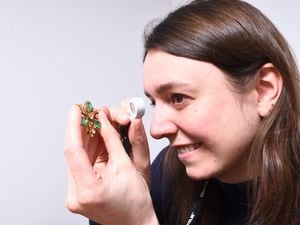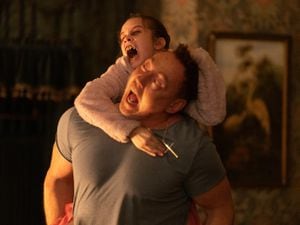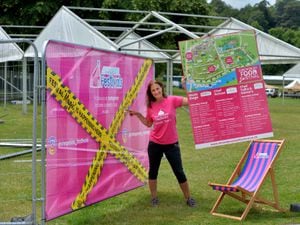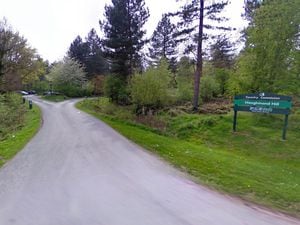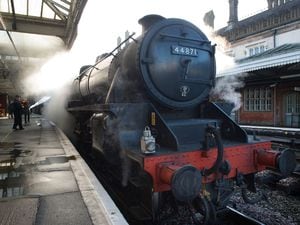Second World War bomber renovated thanks to experts at RAF Museum Cosford - with pictures and video
It represents a moment of wartime heroism – and the families of some of those who flew her made an emotional visit as it prepares its long road to restoration.
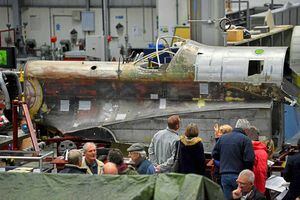
Huge steps have been made towards conserving the Second World War bomber, thanks to the painstaking work of experts at the RAF Museum in Cosford.
Only three Hampden bombers of the original 1,430 are left – one of which is the subject of the restoration project at the Shropshire air base.
It was recovered from a crash site in northern Russia in 1991 and emotions were running high this week as relatives of its former crew visited the Michael Beetham Conservation Centre to catch a glimpse of it in its latest state.
One of the museum's skilled technicians has been building a large section of the aircraft from scratch and significant work has been done on the forward fuselage in the last 12 months.
About 300 people a day have been flocking to the conservation centre during the museum's annual open week to view the Handley Page Hampden and speak to those behind the project.
They have also been able to speak to the daughter of Pilot Officer Esmond Perry and son of wireless operator and air gunner Sgt James Morton Robertson.
Both were members of the aircraft's crew when it was attacked by German forces and crash landed in September 1942.
Patricia Slator, Pilot Officer Perry's daughter, described how she felt seeing the Hampden bomber in its latest state.
The 65-year-old, of Bentley, Hampshire, said: "It's very emotional. It's been alright seeing it in pieces. We've seen it in sections but this is the first time we've seen it laid out near as it would have been.
"People have been really interested in the story and the background of it."
The aircraft took off from Sumburgh, Shetland, on September 4, 1942 and set a north-easterly course for Russia.
It was one of 32 sent out to protect the Arctic convoys.
As it crossed the mountains of northern Norway it experienced severe icing on the propeller blades.
It continued its flight towards Russia but was off course and flew too near to the German occupied airfield of Petsamo.
Anti-aircraft fire began and two Messerschmitt Bf 109s attacked with cannon and machine gun fire – the damage of which can still be seen on the fuselage today.
Pilot Officer Perry decided to make a forced landing in a wood and, although he survived, his legs were badly wounded and he remained with the aircraft.
Technician, Corporal George Shepherd, the only other survivor, was captured by the Germans while attempting to escape to Sweden.
He guided his captors back to the crash site to rescue the pilot and both were later sent to the Stalag Luft III prisoner of war camp in Poland.
The crew were all part of the 144 squadron but air gunners Sgt Robertson and Sgt Daniel Garrity, together with Flight Sergeant Gordon Miller, did not survive the attack.
The wreckage remained in the woodland of northern Russia for nearly 50 years and, following its recovery, it was acquired by the RAF Museum which decided to restore the wreck.
Mrs Slator's father, who was born in London, survived the prisoner of war camp and was released in 1945. He stayed in the RAF until 1966, serving all over the world, and died in 1989, aged 72.
But his daughter said he rarely spoke about his experiences of the war.
She said: "My father joined up for national service. He would talk about flying in general but he wouldn't speak of the war.
"When they crash landed in the woods, my dad was injured. He said to George, 'you try and escape'. George was found by a German patrol and he told them where my dad was.
"They took him to a Red Cross Hospital to get patched up and afterwards he went to the prisoner of war camp.
"All he would say is that his job at the camp was to learn German so he could listen to the guards and feed the dogs, so if there was an escape the dogs wouldn't chase them."
The son of Sgt James Morton Robertson, also called James, recalled how the restoration of the aircraft came about.
The 79-year-old, of Sevenoaks, said: "I was just five-years-old when my father died. My mother thought he had gone to north Africa. She was pregnant at the time."


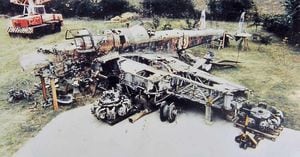
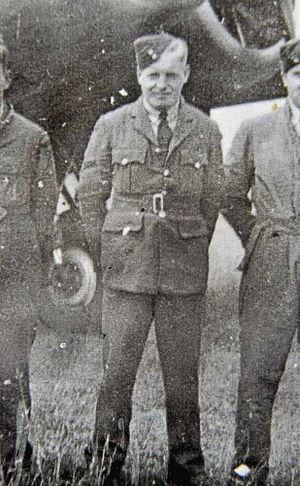
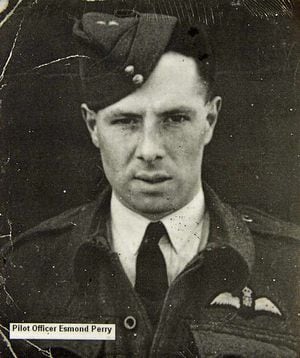
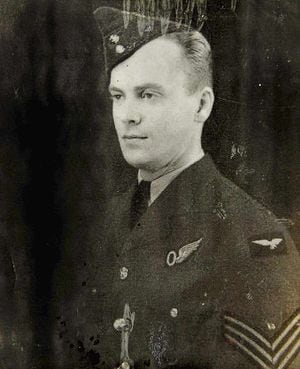
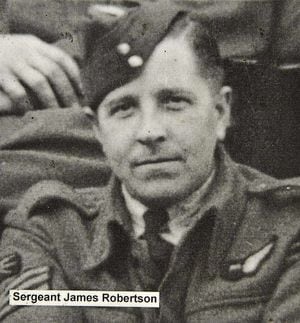
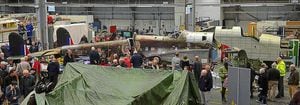
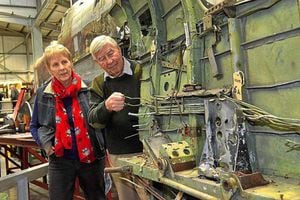
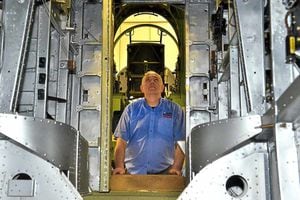
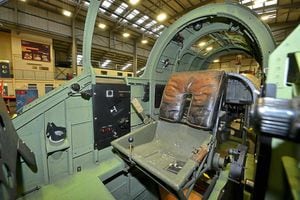
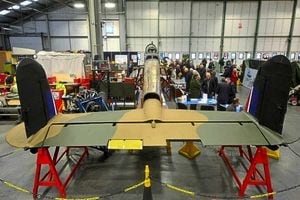
His 32-year-old father, who was from Edinburgh, had been killed during the enemy gunfire.
Mr Robertson said: "I saw a photo of my father in the book, Arctic Airmen. I got in touch with the publishers and I started sending off letters to try and find out more.
"I finally got a letter from the secretary of the Handley Page Association. Handley Page manufactured the aircraft. They said they thought they had found my father's aircraft. In 1991, I saw it for the first time in the Cardington hangars in Bedfordshire.
"To see how it is now is just very, very emotional."
Restoration on the badly damaged airframe has been a slow labour of love for the team at Cosford, but since it was taken under the wings of full time Aircraft Technician Dave Carr 20 months ago, the project has been propelled.
The Hampden's salvaged fin and rudder parts have been fully restored.
Work is now ongoing on the forward fuselage and cockpit section, which has involved building the entire framework from scratch.
The entire new section has been assembled using original Handley Page pre-production drawings from the late 1930s and where possible, measurements taken from the partial wreckage remaining from the original aircraft.
Darren Priday, manager of the conservation centre, said: "It's all being done by hand. One technician has been working on it with help from apprentices. We are rebuilding it as closely as possible to its original state. This is a historical object. It's great to interact with the families of the crew. It's important we know the story and it's been quite emotional for them."

